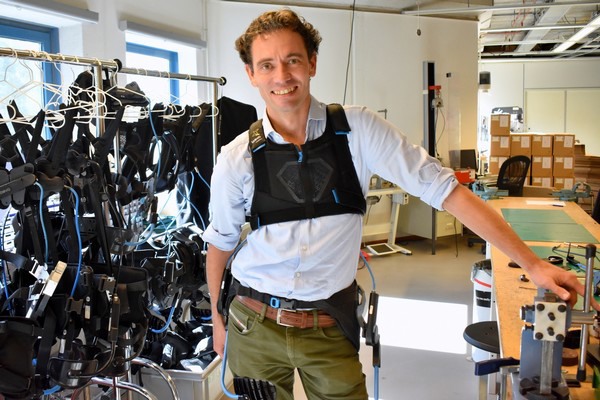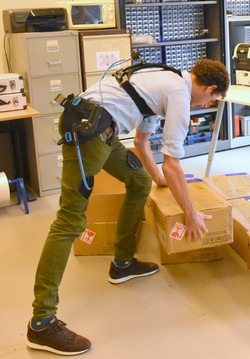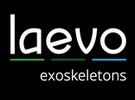In 2013, Rogier Barents founded Laevo with his business partner Boudewijn Wisse. Laevo was a spin-out of the company InteSpring, which once started with systems to balance kitchen cabinets, but much more could be done with this technology. So the idea was born to use the technology to balance people in such a way that lifting would become easier and there would be a lower risk of back pain. This led to the first exoskeletons.

Rogier Barents
In 2015, the first version of the exoskeleton hit the market, the Laevo V2.5, and was also the first commercially available back exoskeleton in the world. Over 2.5 thousand of them have since been sold, and there are now several competitors on the market. What sets Laevo apart is the great direct support at the first bending movement combined with comfort. This has not yet been matched by any other exoskeleton.
For different sectors
Using the exoskeletons is possible in several sectors. Working in a warehouse where heavy boxes are carried from A to B. Operating rooms in hospitals where surgeons need to be able to lean forward for long periods of time. And even in the defense sector, where the Laevo can be an important part of the supply chain.
 The Laevo 2.5 is still a sought-after product, but now the company also has a new model for sectors that can often involve dust and dirt, the Laevo FLEX. This model is dust- and water-resistant, the fabric parts are washable, more flexible, and it gives up to three times more support. It is, therefore, particularly suitable for heavier work. By means of the different gas springs that can be easily exchanged, one can easily match the work to be carried out.
The Laevo 2.5 is still a sought-after product, but now the company also has a new model for sectors that can often involve dust and dirt, the Laevo FLEX. This model is dust- and water-resistant, the fabric parts are washable, more flexible, and it gives up to three times more support. It is, therefore, particularly suitable for heavier work. By means of the different gas springs that can be easily exchanged, one can easily match the work to be carried out.
The new Laevo FLEX now also focuses on horticulture, where the presence of dirt and dust is an important factor to take into account. The Laevo FLEX provides support for low repetitive work, stooping, and lifting heavy plants. The company was recently at Plantarium for the first time, and by now, many satisfied customers are already walking around the industry.
"Educating customer as important as developing product"
According to Rogier, there is another thing they have learned at Laevo that sets them apart as a player in the market.
"Previously, there was a full focus on development and sales but not enough consideration of the full implementation process at the customer's site. If a company bought exoskeletons, the exoskeleton functioned well, but the implementation sometimes still fell through on culture, awareness, logistics, or management. Nowadays, everything starts with testing the exoskeletons for a fortnight to a month, followed by a process in which we look, together with the customer, at a number of factors that determine sustainable use. Are users motivated to use an exoskeleton? Where exactly will they be used? Where do you keep the skeletons? When are they used? How often are they cleaned? Is there a designated person to help and educate colleagues on how to use them, etc.?"
"A good product is one thing. But if you are able to implement it properly too, only then will you be able to make a real impact on sustainable employability," concludes Rogier. If you want to know more about deploying the Laevo exoskeleton to prevent back pain, contact details can be found below.
For more information:
Laevo 
Tel: +31 (0)15 3020 025
[email protected]
www.laevo-exoskeletons.com
